71 巻, 3 号
選択された号の論文の10件中1~10を表示しています
- |<
- <
- 1
- >
- >|
-
2002 年 71 巻 3 号 p. 179-186
発行日: 2002年
公開日: 2007/11/30
PDF形式でダウンロード (4137K) -
2002 年 71 巻 3 号 p. 187-193
発行日: 2002年
公開日: 2007/11/30
PDF形式でダウンロード (3983K) -
2002 年 71 巻 3 号 p. 195-196
発行日: 2002年
公開日: 2007/11/30
PDF形式でダウンロード (593K) -
2002 年 71 巻 3 号 p. 197-200
発行日: 2002年
公開日: 2007/11/30
PDF形式でダウンロード (1873K) -
2002 年 71 巻 3 号 p. 201-210
発行日: 2002年
公開日: 2007/11/30
PDF形式でダウンロード (4468K) -
2002 年 71 巻 3 号 p. 211-213
発行日: 2002年
公開日: 2007/11/30
PDF形式でダウンロード (1340K) -
2002 年 71 巻 3 号 p. 215-221
発行日: 2002年
公開日: 2007/11/30
PDF形式でダウンロード (3241K) -
2002 年 71 巻 3 号 p. 223-233
発行日: 2002年
公開日: 2007/11/30
PDF形式でダウンロード (4645K) -
2002 年 71 巻 3 号 p. 235-238
発行日: 2002年
公開日: 2007/11/30
PDF形式でダウンロード (1735K) -
2002 年 71 巻 3 号 p. 239-244
発行日: 2002年
公開日: 2007/11/30
PDF形式でダウンロード (3839K)
- |<
- <
- 1
- >
- >|
